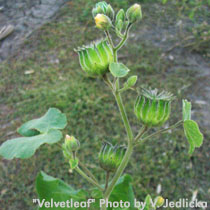Weed Management
This section discusses weed management, identification, physical control, cultural control and herbicides.

To prevent weeds from taking over, plant perennial grasses in lawns, ditches and pastures. Once established grasses cover bare soil, grass competition inhibits weed growth. Careful management is the key to obtaining good grass stands. Weed problems can become troublesome when pastures are over-grazed.
An Acreage Owner's Approach to Integrated Weed Management
Educate Yourself: Learn to identify your weeds. Understanding their life cycle will help you time your treatments for best control.
Physical Measures: Use cutting, mowing, tillage and clean cultivation to discourage weed growth.
Cultural Methods: Crop rotations, reseeding with competitive plant species, mulching, proper pasture management and other revegetation projects may limit weed populations.
Herbicides: Use registered herbicides found in the current Guide for Herbicide Use in Nebraska, available at your local Extension office. The purchase and use of restricted herbicides requires the applicator to hold a private applicator's license. Contact your local Extension educator for information on certification.
Preventative: Weeds are easiest to control when they are small and before they set seed or spread.
Weed Classification: Control efforts differ depending on type.
Perennial (Plant comes back each year). Examples: Canada Thistle, Leafy spurge, Stinging Nettle
Biennial (Plant lives for two years). Examples: Dandelion, Wild parsnip, Musk thistle
Annual (Plant lives one year). Examples: Pennycress, Downy brome, Foxtail
Noxious Weeds (Control Required by Law). Examples: Canada and musk thistle, Leafy spurge, Knapweeds
Source: Adapted for Lancaster County, Nebraska from A Place in the Country: The Acreage Owner's Guide (EC97-2506C).

More Acreage Resources & Small Farm Resources